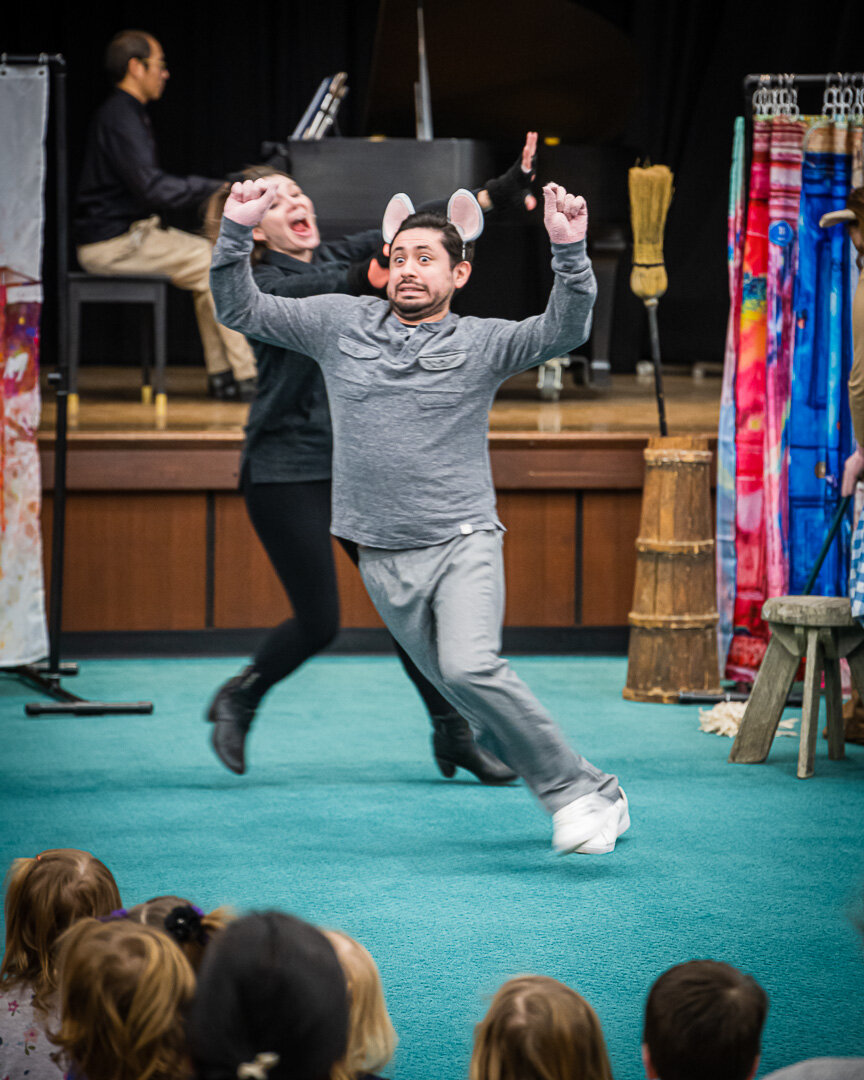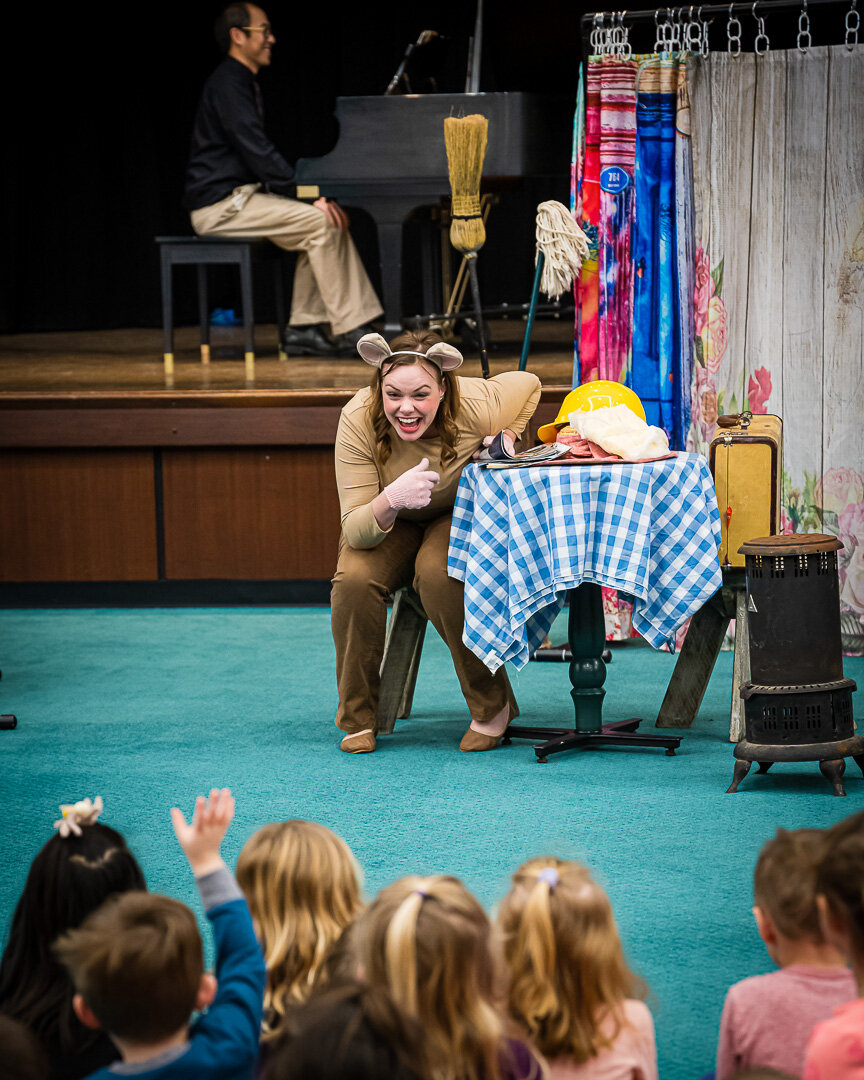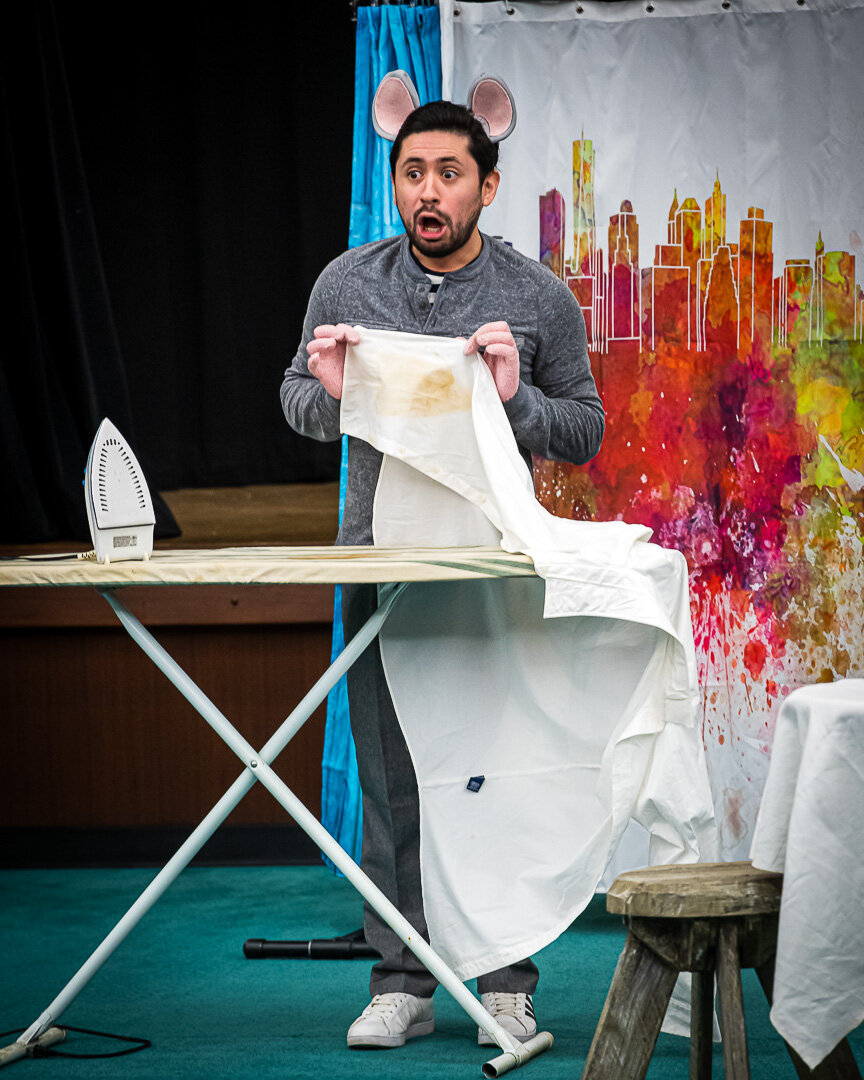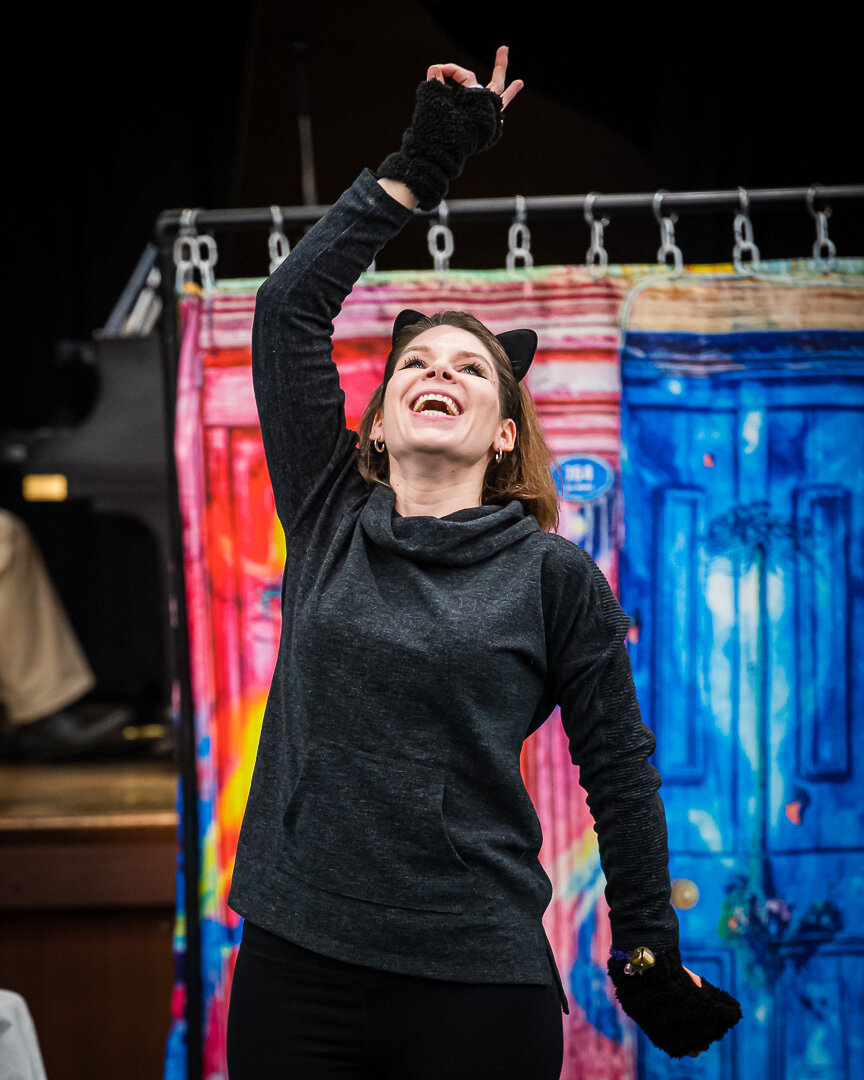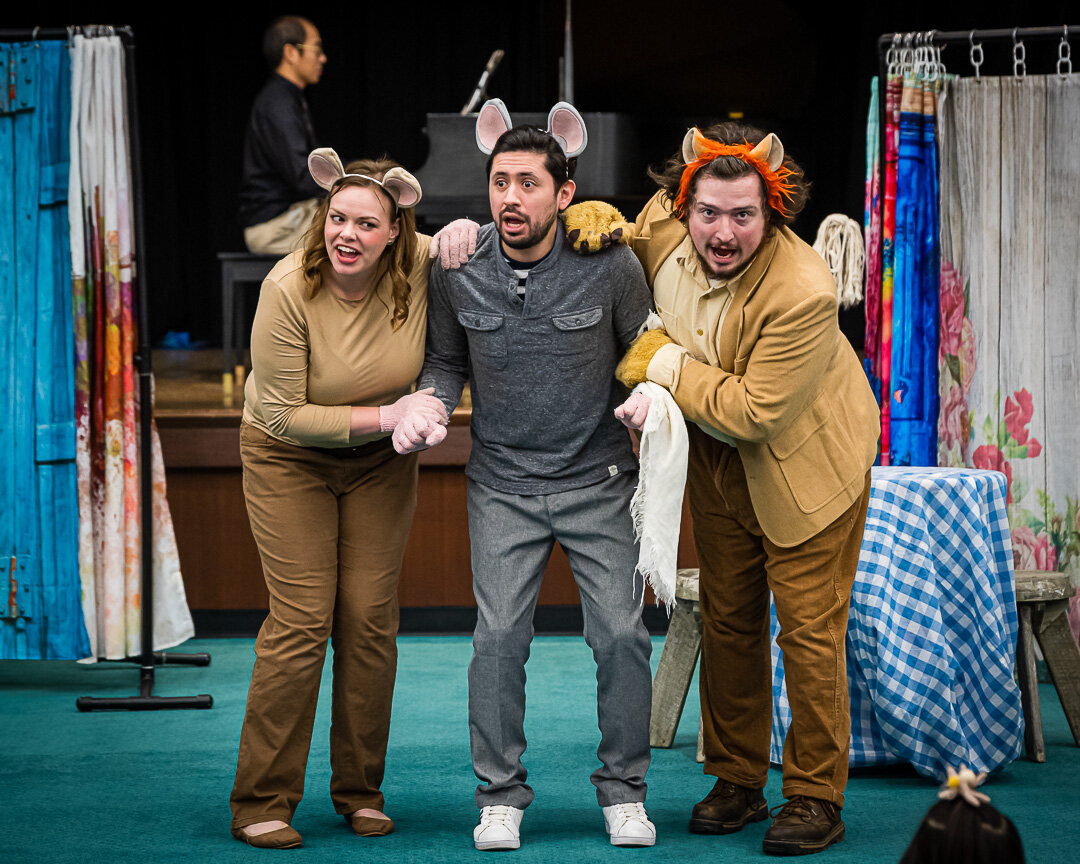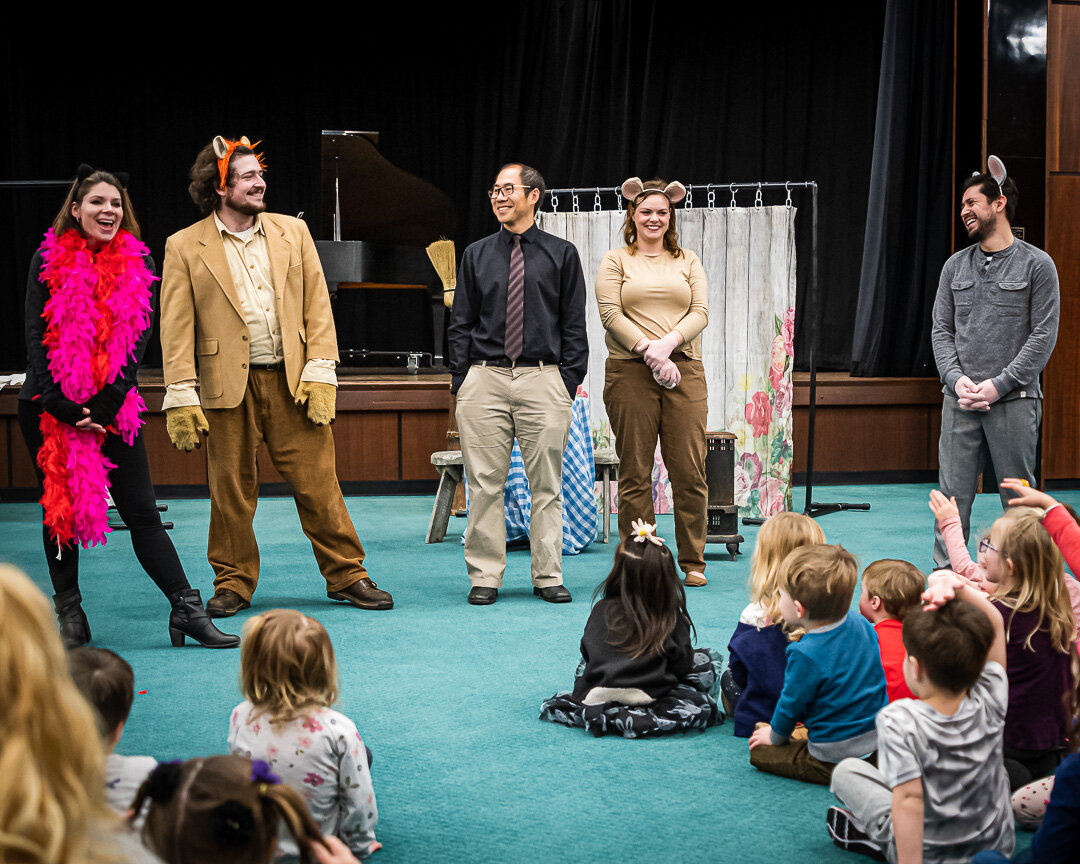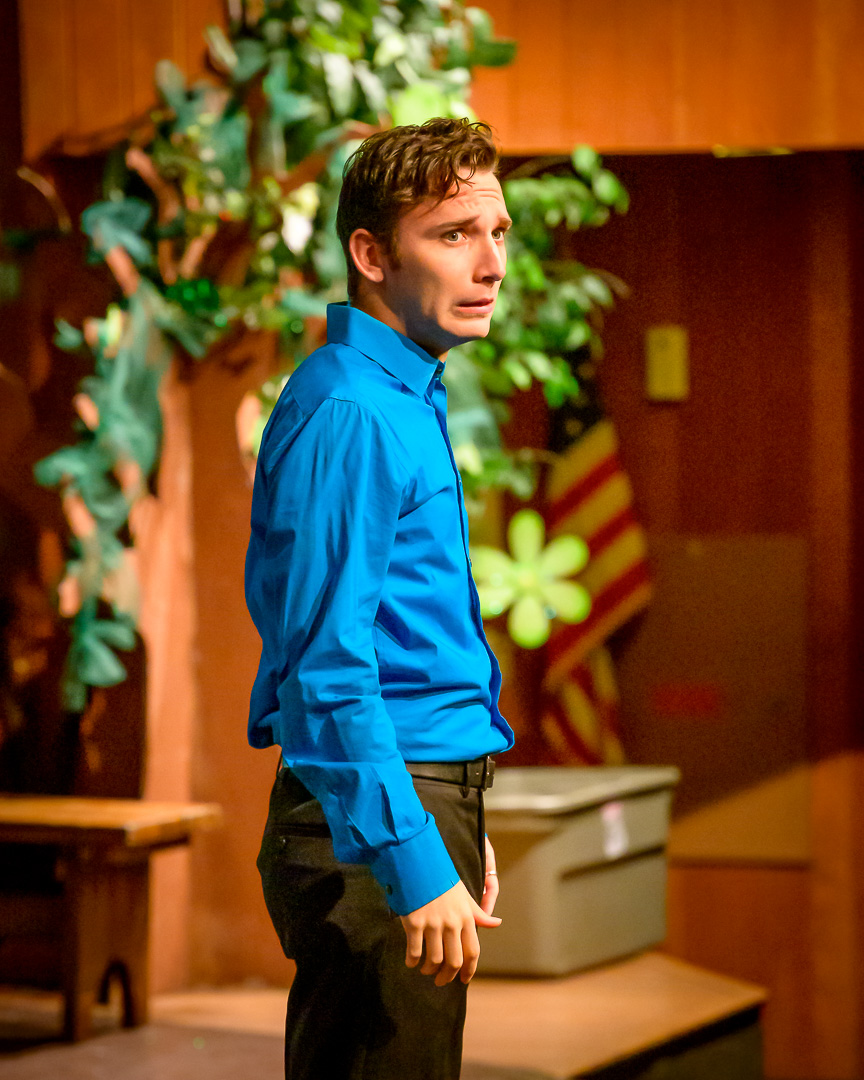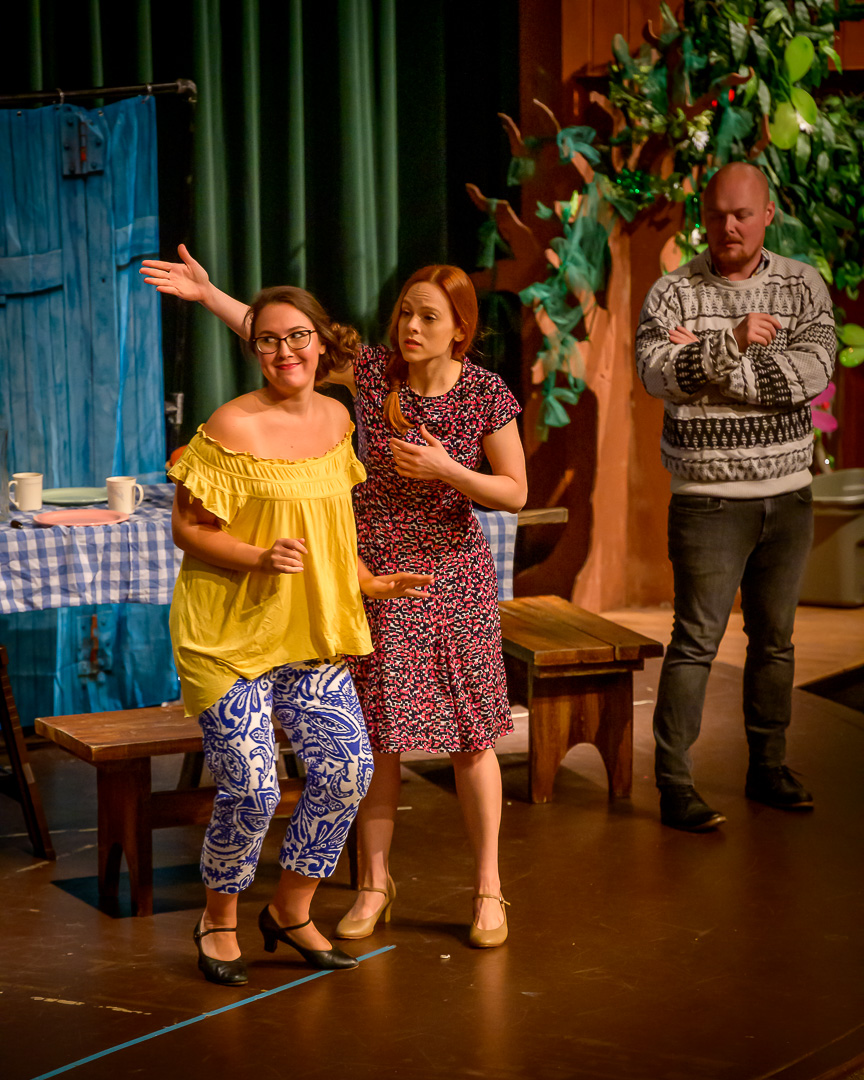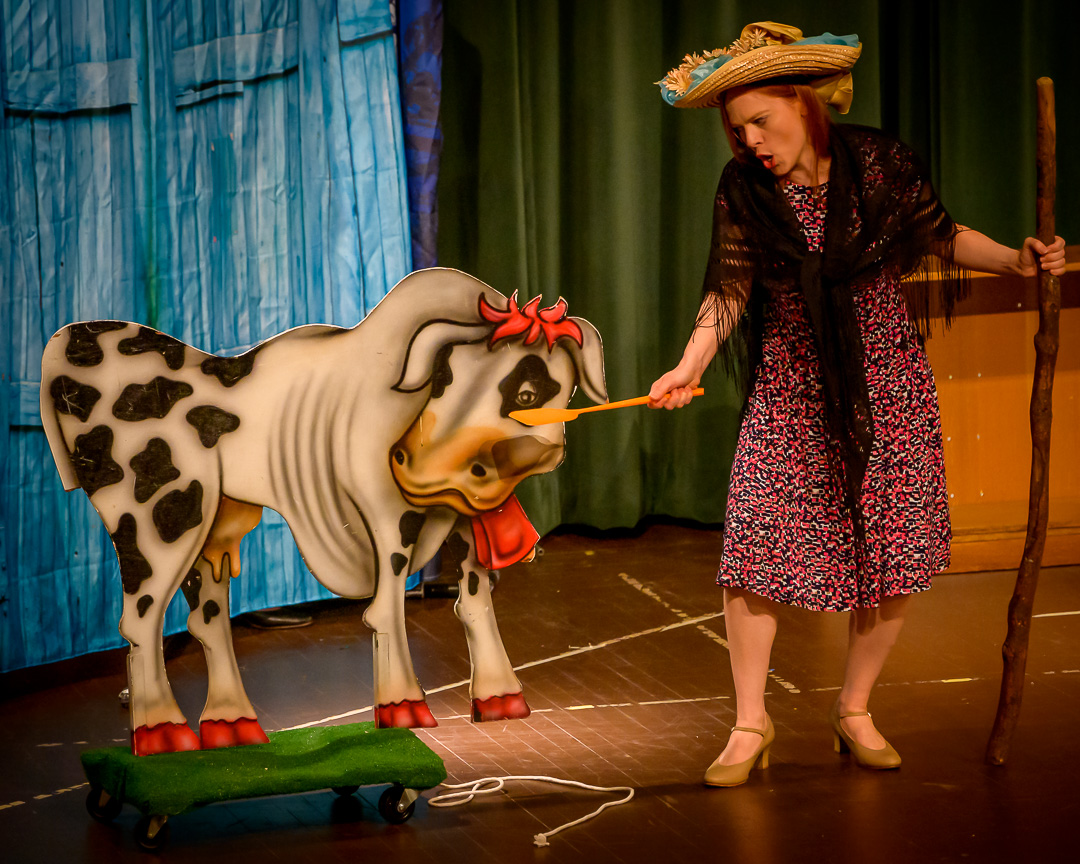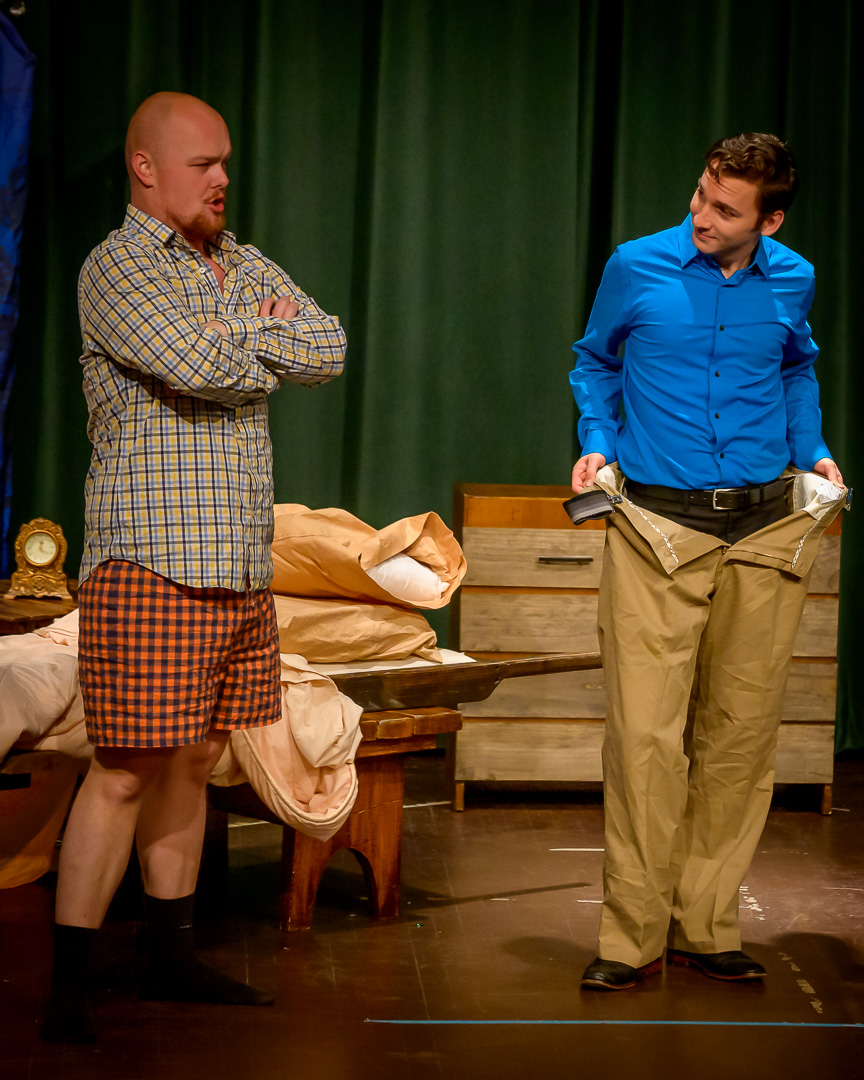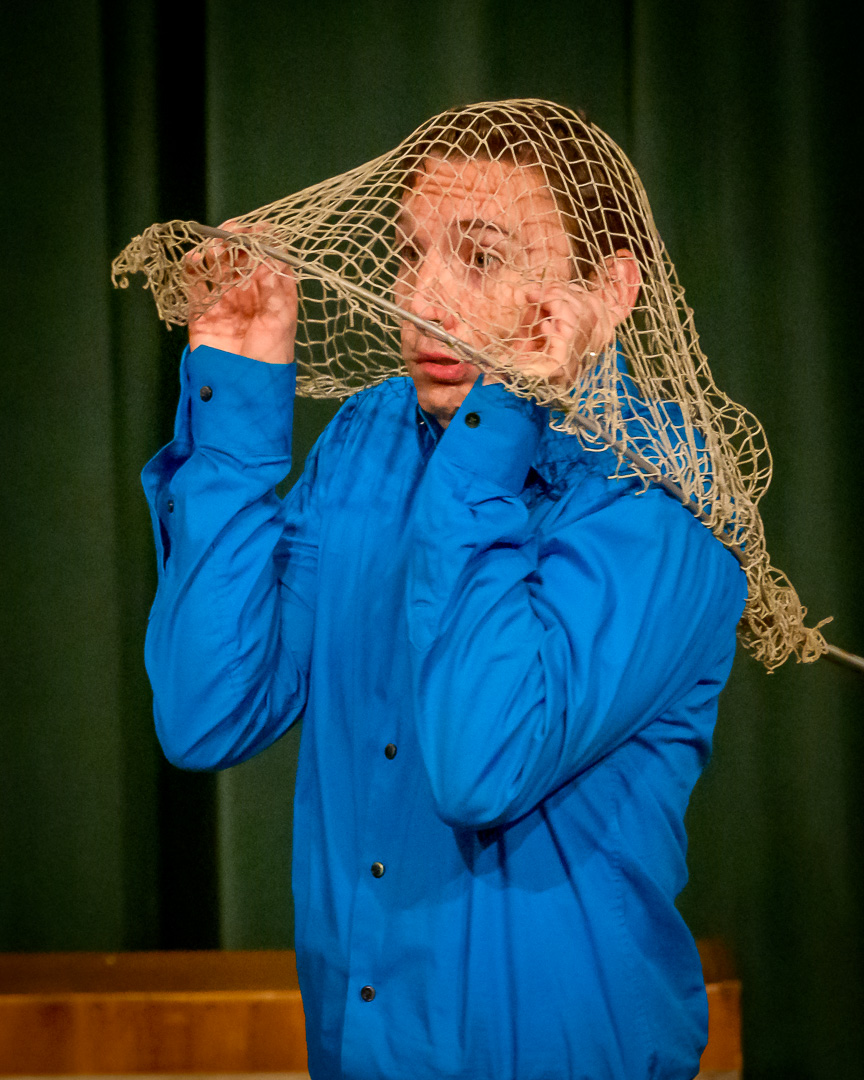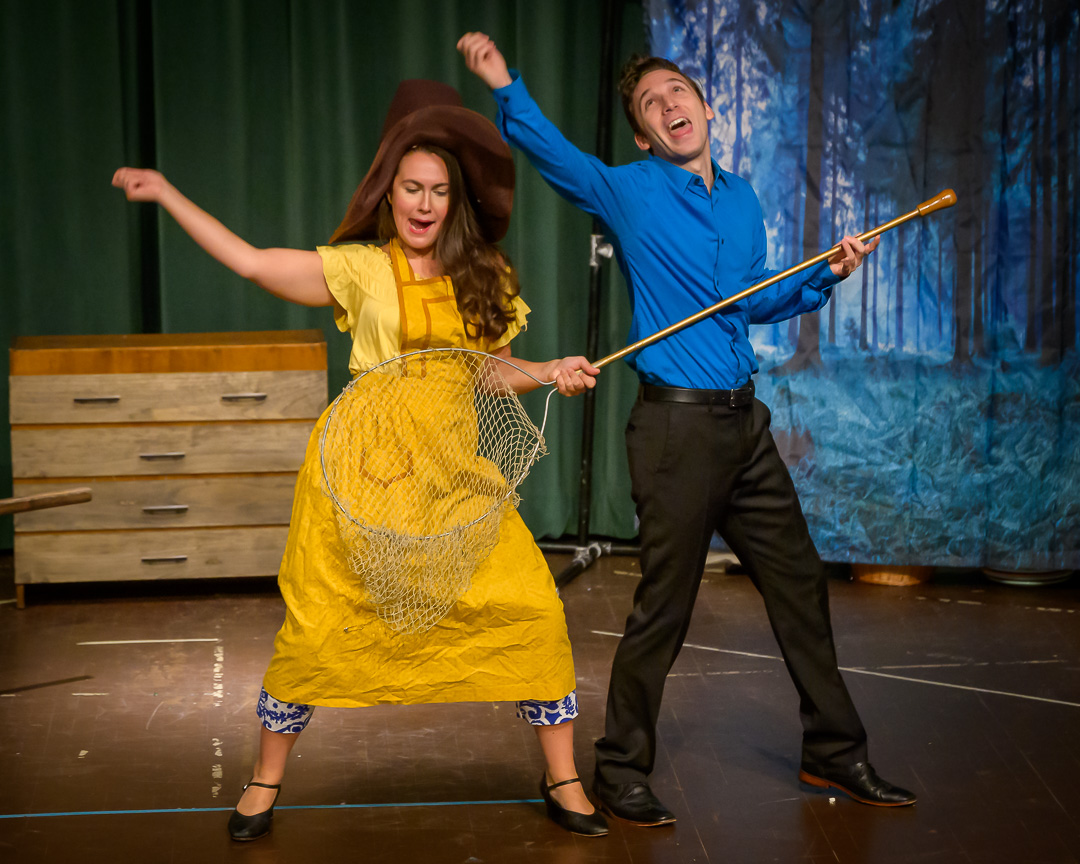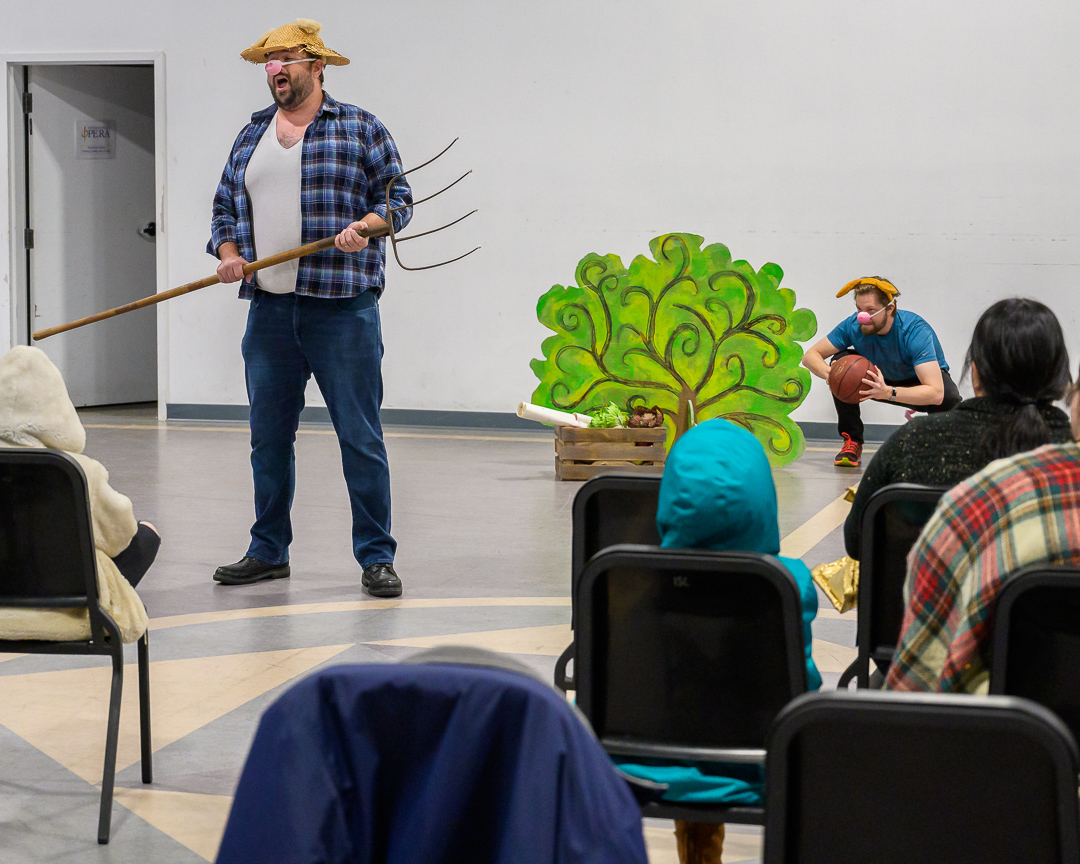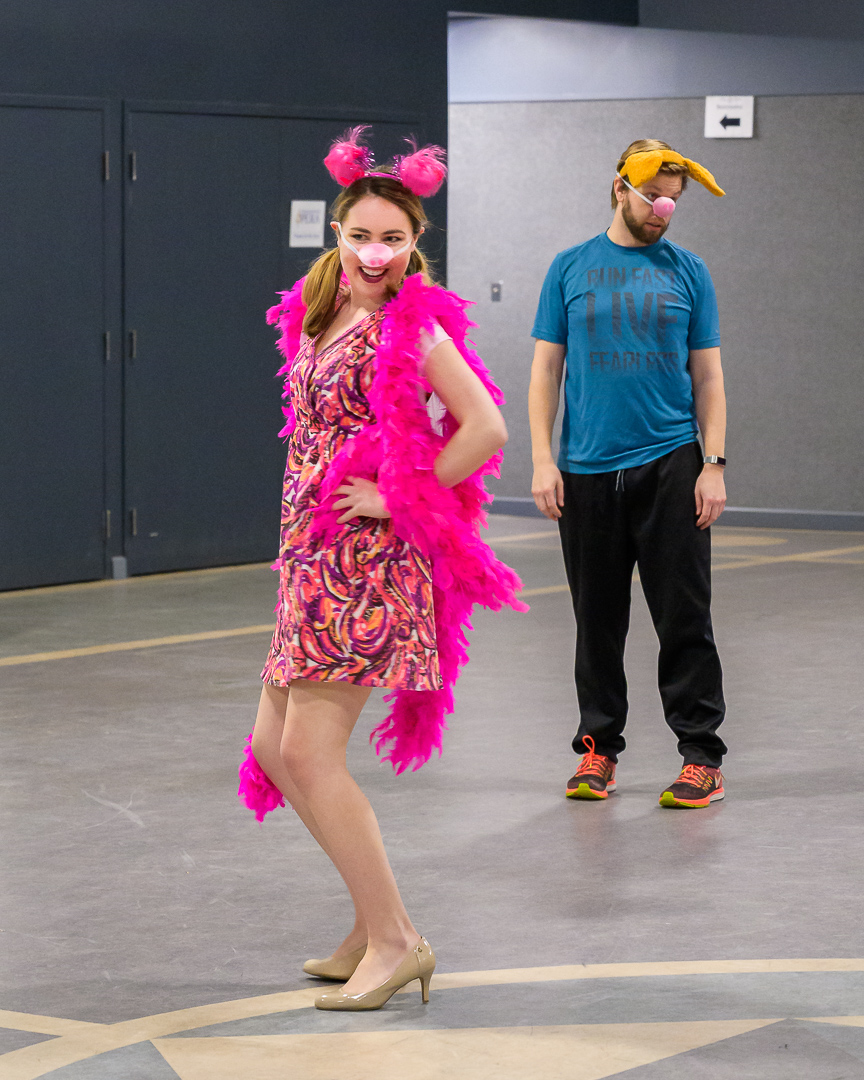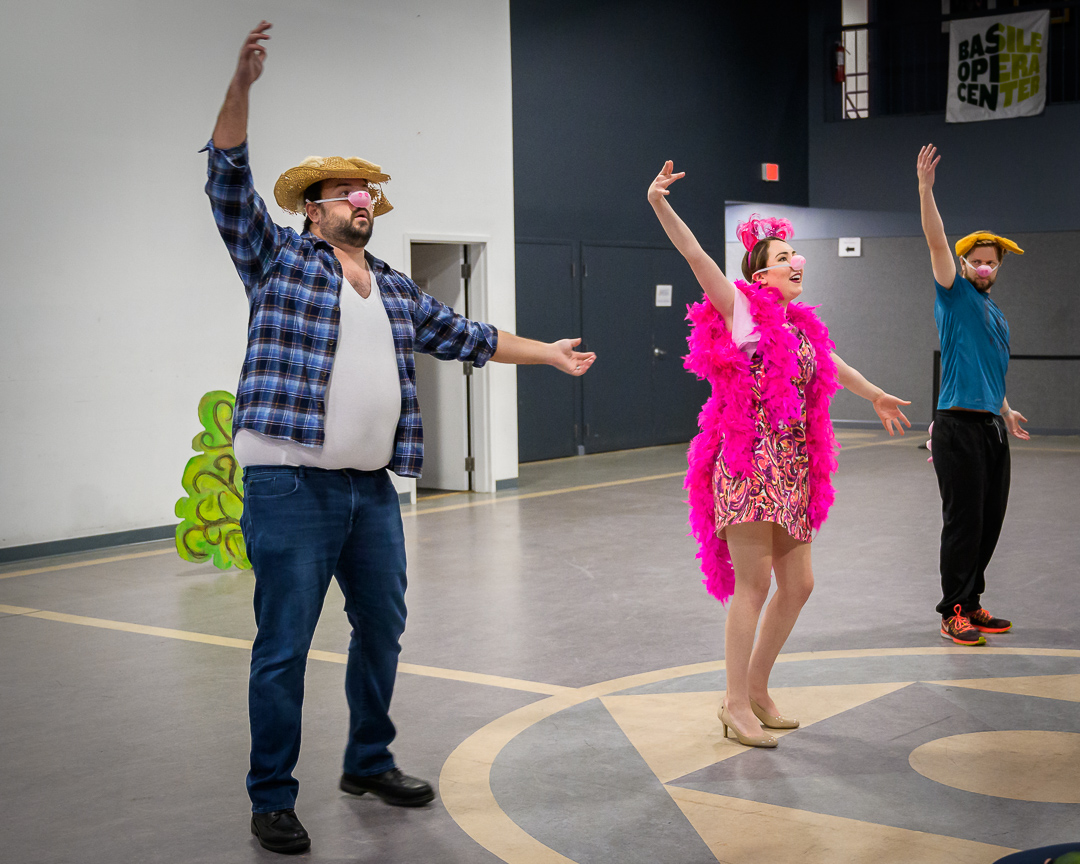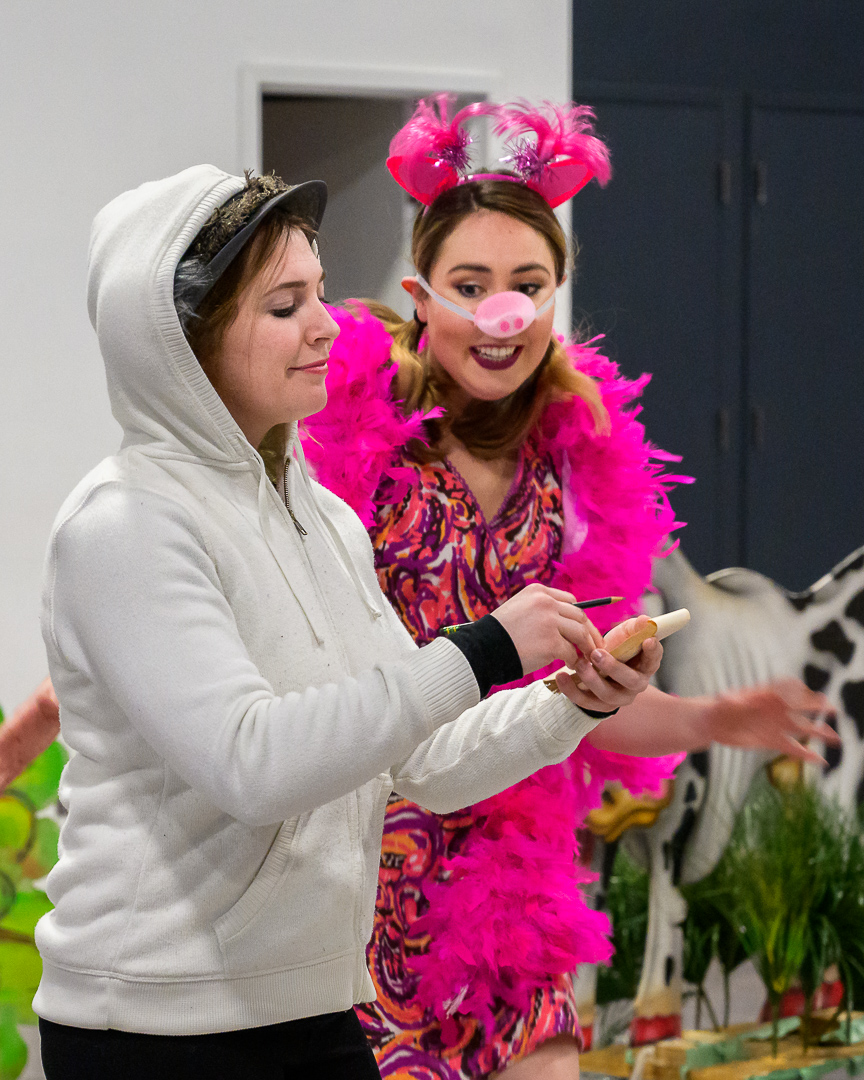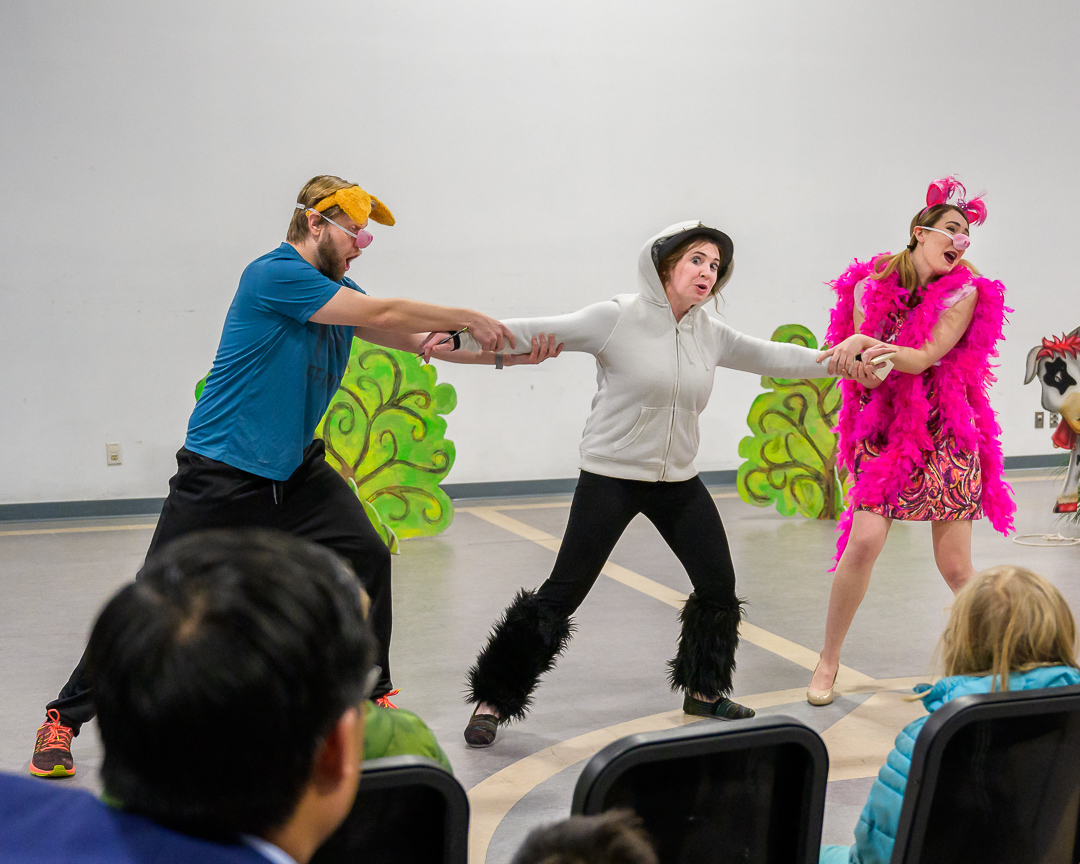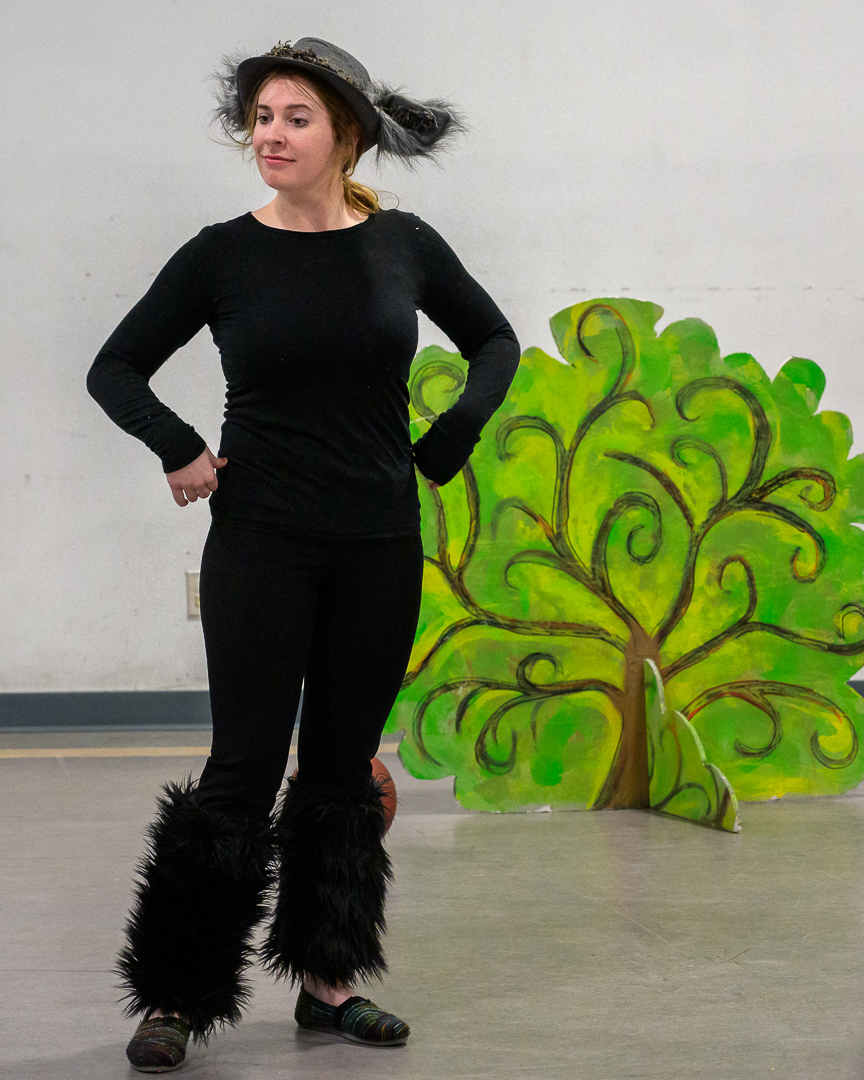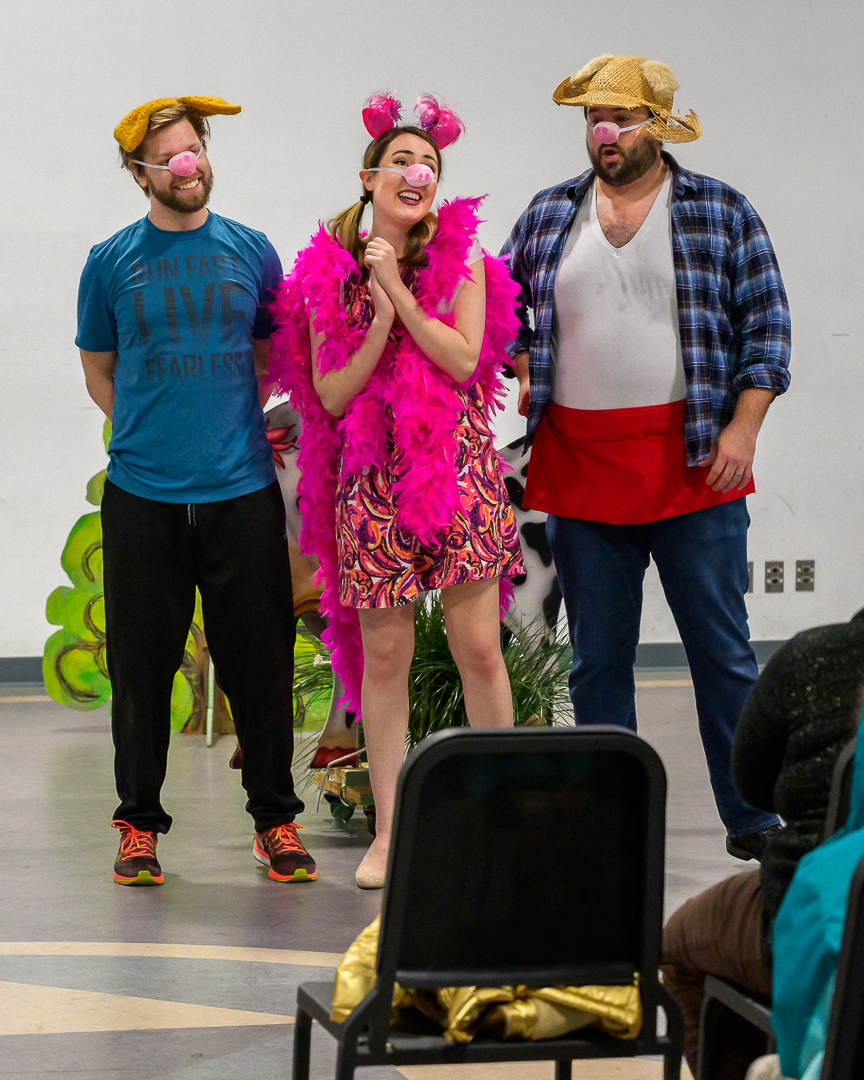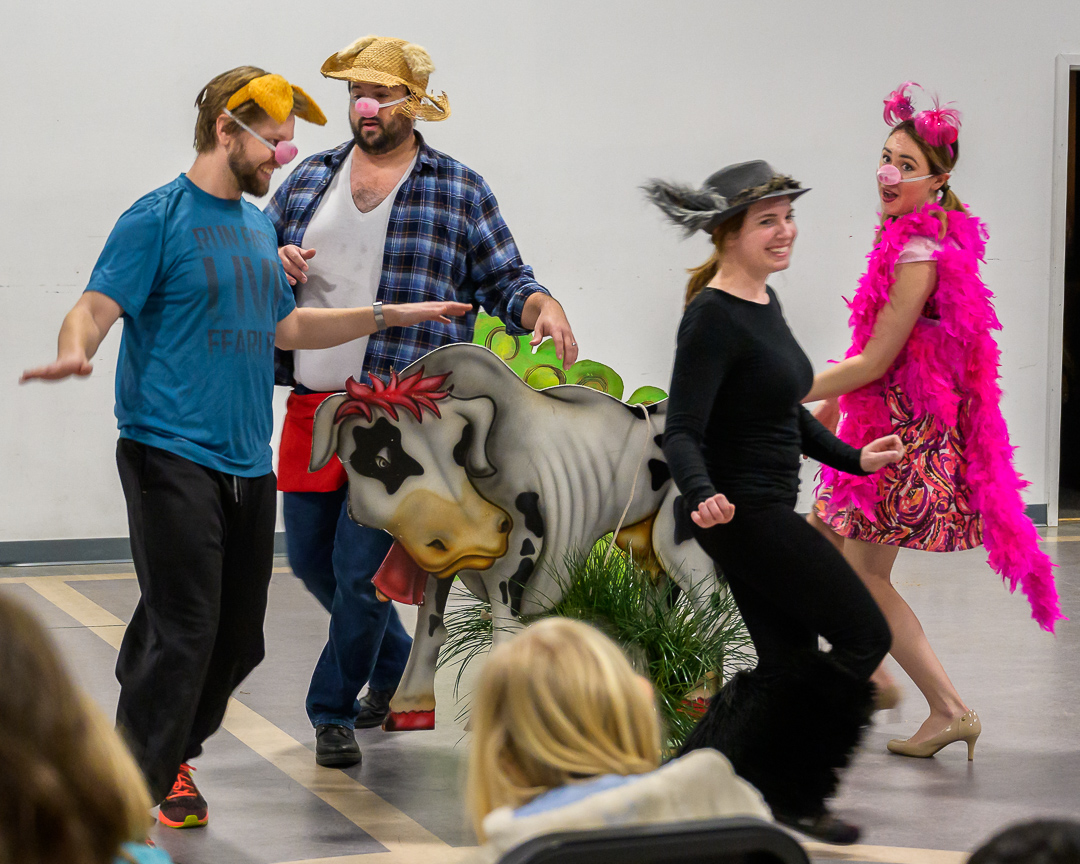Operas for Young People
Since 2015, I have directed or participated in operas production for young people either as a singer, director, or coordinator. Florida State gave me the opportunity to perform in The Stolen Princess (based on Mozart’s Die Zauberflöte), Hansel & Gretel, and Little Red Riding Hood while coordinating tours in 2016 and directing a middle school tour of Beatrice & Benedict in 2017. That work has continued at the Indianapolis Opera where I directed The Not-So Ugly Duckling and The Three Little Hoosier Pigs by Briana Sosenheimer, and my latest operas, The Three Sillies and The Tails of Cats and Mice. These operas are part of a pivotal strategy to develop the next generation of audiences, in addition to inspiring children to pursue their passion in music, performance, art, or production. The productions I describe below are part of my directed works, and offer insight into the creation/adaptation process behind each piece.
NAVIGATION
You can either scroll down the page to see each show in order, or click on the title you are interested in reading more about.
The Tails of Cats and Mice (Spring 2020)
Writer/Arranger
Director/Designer
Photos by Roger David Manning
Performance & Production Credits
Producer: Indianapolis Opera
Pianist: Andrew Pham
Country Mouse: Janese Pentico
Lion: Alexander Henderson
City Mouse: Felipe Prado
Cat: Laura Zahn
Synopsis
A Country Mouse writes to her cousin that she would like to see him. Only problem is that she hasn’t been to the city and is a little scared to go for the first time. Thankfully an audience full of helpers will help point her in the write direction. As soon as she has finished packing, though, she hears a Lion in the distance, who complains about the outdoor life after a thorn has injured his paw. Will the Country Mouse help him or find some way to sneak out undetected?
In the city, the City Mouse waits for his cousin to arrive. When she does, they make plans to go to a restaurant nearby. Only problem is that there’s a cat on the way. The City Mouse thinks he has a way to track the cat if he can just convince it to put a bell around its paw. It’s a dangerous plan, but maybe it’s the only one they’ve got.
In the final scene, the mice return to the country after an eventful night out. But will they find a friend or foe in the Lion, and will the Cat be easy to detect or a silent predator? The choices they’ve made will make all the difference!
Working in a New Form
The Tails of Cats and Mice is my latest pastiche opera for elementary school audiences, and I am so happy to see how this strange idea morphed into its final form.
The basis of the story comes from a variety of Aesop’s Fables, which I had read when I was in elementary school and revisited through the years. The simplicity of the characters and message in every fable make them such an important part of classic literature, and often help shape a young understanding of the world at large.
The four stories that I mashed together included “The Country Mouse and the City Mouse,” “Belling the cat,” “The Lion and the Mouse,” and “The Slave and the Lion.” From them, I rendered a familiar core of four characters, including the Country Mouse, City Mouse, Cat, and Lion. However, the unique twist on the typical children’s opera structure is that the audience has the ability to choose how helpful or avoidant the mice are throughout the story. Different paths were written for the Country Mouse helping the Lion with the thorn in his paw, and similarly diverging story lines were written if the mice decided to bell the cat or try a less ingenious plan. The final scene in the script was given the subtitle “Consequences,” as the several choices the audience result in calamity or calm based on what they had chosen earlier.
It was a challenge to present the various strains with a clear hint of what Aesop would have suggested while still making the alternative look attractive. The idea of belling or not belling the cat yielded the most split decisions, because in the original story the mice decide that the idea is dangerous, impossible, or both. Their conclusion, which made it into this script in several story paths, concludes that good ideas are only worthwhile if you can make them happen.
The music came from a variety of top opera composers, including Mozart, Beethoven, Rossini, Humperdinck, Bizet, Offenbach, Verdi, Puccini, and Leoncavallo. My goal in selecting music for this production was pulling music from the most-performed operas in the United States or world, and avoid some of the deeper cuts I had used in The Three Sillies. My nature typically is to dive into repertoire that’s unfamiliar or rarely performed, so it was a nice change of pace to stick to numbers from Le nozze di Figaro, Gianni Schicchi, or Il trovatore for a change.
The Three Sillies (Fall 2019)
Writer/Arranger
Director/Designer
Photos by Roger David Manning
Performance & Production Credits
Producer: Indianapolis Opera
Pianist: Elizabeth Chua
The Young Man: Sebastian Armendariz
The Daughter/The Old Woman: Kathleen Buccleugh
The Mother/The Hotel Manager/The Pond Woman: Katherine Fili
The Father/The Man in the Hotel: Cameron Jackson
Synopsis
A young man visits his beloved’s house for a typical lunch. The plans are thrown off, though, when the father and erstwhile repairman around the house decided to hang a mallet above the doorway. The mother and daughter use rising silly tactics to get the father to agree to put the mallet somewhere else. The young man decides that he’s had enough, and leaves to calm his mind and ice his head, which got bonked repeatedly by the family.
He assumes that no one could be as silly as those three, but quickly finds that silly people are everywhere. He meets an old woman who wants to put her cow up on the roof because it’s a very picky eater, and later a man who doesn’t know how to put on pants, and finally a woman who mistakes a reflection in the water for the real thing. Through his journey, he realizes that everyone reacts to problems in their own way, and what might seem silly to one person may be the best way another person knows how to take care of something. He goes back to the family’s home, and apologizes to his beloved and everyone is happy to see things resolved.
Writing my first opera for elementary school audiences
The Three Sillies was the first opera that I wrote specifically for elementary school audiences. I have experience performing in several tours of outreach programs for this grade level, and I used a lot of my experience performing and directing children’s shows to inform my entire writing process. I based the five scene structure of The Three Sillies from the formula I used in Beatrice & Benedict, and also tried to feature a similar number of arias mixed with duets, trios, and quartets so that the entire group was fully utilized. The music came from a variety of sources, including Purcell, Mozart, Rossini, Beethoven, Strauss, Jr., and Offenbach, among others.
The story, which was suggested by my grandmother, and comes from an English folktale by the same name. It was very important to me that when I received this commission, I didn’t want to write another version of a familiar children’s story; I wanted to go into my own territory. The Three Sillies was a perfect fit, as it allowed for all sorts of hijinks just for the fun of it. It also had perfect structure for how I wanted to create a new opera, and the ability for several singers to play multiple characters, which I loved doing in the past..
This project was a pleasure to put together, especially working with my excellent cast and musical director. Everyone brought great ideas to the table and bought into a very silly and unconventional story.
The Three Little Hoosier Pigs (Spring 2019)
Director/Editor
Costume Design
Photos by Roger David Manning
Performance & Production Credits
Producer: Indianapolis Opera
Pianist: Dasom Kwon
Set design: Briana Sosenheimer
Larry “Bird” Pig: Zachary Angus
Frederic Pig: Brandon Evans
Susie Pig: Therese Pirçon
The Big Bad Wolf: Lauren Carter
‘Three Little Pigs’ Meets Indiana
Sosenheimer’s first children’s opera for Indianapolis Opera tells the tale of The Three Little Pigs, with lots of Hoosier flare. Larry “Bird” Pig is a basketball wannabe who just wants to play around, while Susie is enamored with showchoir. Their brother, Frederic, maintains a farm for the family and finds that he’s the only responsible guy in the group.
Susie and Bird put off building a house, which leaves them in danger with a wolf lurking about. The wolf initially comes to them in sheep’s clothing, boasting how she can help design their homes. As soon as they’ve let their guards down, the wolf springs her trap, but the pigs are able to run away. Susie is able to join Frederic in his brick house, while Bird makes a flimsy home out of cut-out basketball photos. The Wolf is able to finally trap Bird once again, but discovers that the pigs are not to her taste. While she smells something tasty in the air, the pigs discover that the Wolf is more interested in the vegetables on their farm rather than the bacon on their backs. With an understanding that the Wolf will leave them unharmed in return for some crops, the Pigs are able to celebrate as a family once again.
The Not-So Ugly Duckling (Fall 2018)
Director/Editor
Performance & Production Credits
Producer: Indianapolis Opera
Pianist: Jeeson Eun
Set designer: Briana Sosenheimer
Don: Michael Colman
Juliet: Emily Spencer
Mr. Basilio: Kevin Adamik
Lucky: Anne Slovin
First Outreach Opera Directed for Indianapolis Opera
The Not-So Ugly Duckling was one of two operas written by Briana Sosenheimer for the Indianapolis Opera. The opera places the story of The Ugly Duckling in a school setting to demonstrate the danger and cruelty of bullying. Sosenheimer chose a variety of composers and arias to adapt for this new pastiche, featuring music by Handel, Mozart, Bizet, Verdi, and Johann Strauss, Jr. I made some small alterations to her original staging and script, but Sosenheimer gave us great material to work with. The kids all agreed that the highlight scene was the food fight between Lucky, Don, and Juliet.
We were also afforded the opportunity to work with the Boys and Girls Club of Indianapolis during an eight-week residency. Throughout our visits, we inserted the children into the show as fellow ducks, and helped to teach them about music literacy, instrumentation, stage movement, and partner work through a series of conversations and games. We were very happy to see how much they enjoyed the games and learning along with us, and they put on a very cute performance for their families and friends at the end of our visit with them.
Beatrice and Benedict (Feb. 2017)
Adapter / Director
Performance & Production Credits
Producer: Matthew Lata & FSU Opera Outreach
Music director: Minji Nam
Set designer: Grant Preisser
Beatrice: Emily Howes Heilman/Shenika John Jordan
Benedict: Samuel Mathis/Luke Barnard
Hero: Savannah Hirst/Camden McLean
Claudio: Titus Muzi/Noah Nethery
Ursula: Katherine Kincaid/Elena Maeurer
Peter: Evan Nelson/Mark Spang
Synopsis
At Messina High School, everyone is excited to attend the Valentine’s Day Dance and find out which girl will win the Sweetheart Crown at the basketball game that same night. Hero, one of the more popular and oppressive girls at the school, believes that she has laid out all of her cards correctly to ensure that she will win the crown.
However, Hero suspects that her victory might be spoiled by the antics between her sister Beatrice and her object of affection/derision, Benedict. Hero comes up with a plan to bring the two together, though the two outwardly feign interest in the other when pressed by their friends, Ursula, Claudio, and Peter. Unfortunately for Benedict, he is forced by his friends on the basketball team to wear a silly Cupid costume and present an arrow as a form of invitation to the dance. He presents the arrow to Beatrice, who is shocked and flees the scene. Moments later, the presentation of the crown takes place and to Hero’s horror, her put-upon friend Ursula was voted as the queen.
Outside, Beatrice gathers her thoughts and is able to admit her feelings towards Benedict. When he and their friends arrive, there is a moment of doubt that they will fall back into familiar ways. Benedict decides to admit his feelings for Beatrice, and they leave for the dance together along with everyone else.
Adapting French Opera Based on Shakespeare in America…
For Middle Schools?
Work on Beatrice and Benedict began during the summer of 2016, as I looked for shows that would be appropriate to produce for FSU's Opera Outreach tour for middle schoolers. Not surprisingly, this seems to be a noticeable audience segment for which composers haven't written much.
What attracted me to the piece were several factors: a fun, French score by Berlioz, a Shakespearian-based plot, and strong central characters that had a sense of humor. When I pitched this to my producer, I originally envisioned a hipster-style wedding weekend for Hero and Claudio that Beatrice and Benedict were ruining with their antics. He, instead, pushed me to make the piece more directly reflect the lives of middle/high schoolers in the production.
I began the adapting process once I knew what my scenario was. Due to the specificity of the location/period, I couldn't directly use much of the original libretto or Shakespeare’s play, either. I had to find ways of making clever adjustments to the plot and characters, while including occasional winks to the source materials. The soldiers became basketball players (with a Warrior logo), a wedding became a homecoming-like ceremony, and Berlioz’s contrived 'wine of Syracuse' had to go for obvious reasons.
One of the biggest changes I made to the characterization was changing Hero from the meek and innocent character that she is in the play and opera into a ego-maniacal control-freak as she appears in this production. By doing this, it helped provide the necessary antagonist and driving force needed to propel the events of the story, especially when there were only six characters in the adapted version rather than the more robust cast lists in the play or opera. One of the things I find most strange about Berlioz’s adaptation of Much Ado About Nothing is his elimination of the Don John character in the play by Shakespeare, who acts as the prototypical Iago stand-in we would later see in Othello. By giving Hero a more aggressive and controlling personality, it helped me as a writer and director create drama while still remaining mostly true to the focus of the source material, which to me was people having the freedom to admit how they feel and stand up when they are being treated poorly or unfairly.
The production received a fair amount of local coverage, including videos from a news station and the county school system, and an interview in the local paper.
Ultimately, this production was an important stepping stone for me. It was the first time I worked with Grant Preisser in a director/designer context, and the first instance working with double cast rehearsals. More importantly, it helped me share my belief in the necessity of kindness, truthfulness, and living without fear of judgment to an audience that has been frankly under-served by the genre of opera.

